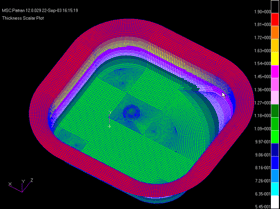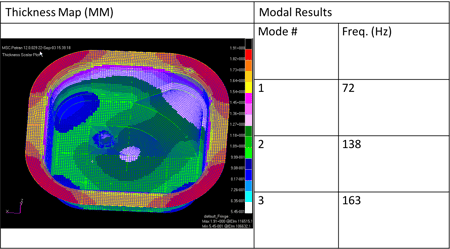 The mechanical and thermal processes used to manufacture components and assemblies can have huge effects on their performance and longevity in service, but CAE simulation rarely takes this into account.
The mechanical and thermal processes used to manufacture components and assemblies can have huge effects on their performance and longevity in service, but CAE simulation rarely takes this into account.
Many years ago I was involved with an engine mounting bracket design. Our durability modelling showed that the parts would perform acceptably, and this was borne out by the initial prototype testing.
However, when the casting process was productionised – from sand casting to die casting – the parts began to fail due to fatigue. This was ultimately traced back to high frozen in stresses from the die casting process raising the mean stress in the component and hence reducing the fatigue life. Today, progress in CAE technology means we can simulate many manufacturing processes to enable us to account for these effects. Some examples are:
- Modelling a superforming process with MSC Marc to more accurately predict the local thickness of a panel and hence its dynamic characteristics in an MSC Nastran NVH simulation
- Using Digimat to pass the fibre orientation field from a mould filling analysis into MSC Nastran to more accurately represent the orthotropicity of the material
- Using MSC Marc in a coupled curing-thermal-structural analysis to predict spring-back of laminated composite components
- Modelling the welding process with MSC Marc to predict distortion and residual stresses in a weldment
Using the first example to illustrate the benefit that Virtual Manufacturing can have, we can compare the modal characteristics of a superformed oilpan. You can approximate the local thickness in such a part using a stretch ratio approach. This method gave a thickness map and natural frequencies as shown below.

Using MSC Marc a simulation of the superforming was run which gave a quite different thickness map and modal results:

Clearly more engineering effort and potentially more material would have to be used to obtain a similarly stiff design (about 35% stiffer) if the approximate approach for thickness prediction were used.
Owning a software inventory capable of not only modelling the service loads and durability of your products but also simulating their manufacture is often too costly and impractical for all but the largest engineering companies. Particularly as the manufacturing applications are often costlier and less frequently used than the day-to-day structural analysis tools. The multi-disciplinary portfolio available within the MSC One token licensing system can give you the flexibility to do all of this within a cost-effective subscription model.
.png?width=139&height=70&name=DTE-Logo%20(4).png)

